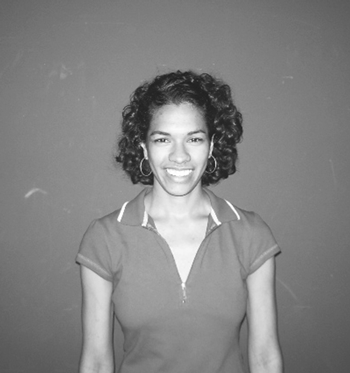Working to give visibility to queer women of color
Summer of ’95, Bates Dance Festival—the Urban Bush Women reduce Marya Wethers, a second-year dance major at Mount Holyoke College, to helpless sobs.
It was the premiere of “Blood and Ashes: A Gilda Story,” based on Jewelle Gomez’s novel about an immortal vampire from New Orleans—who is black and a lesbian.
“For the first time, imagine—I’m seeing a dance performance, it’s black women, and the story is of this powerful, strong, intelligent, woman who loves other women,” Wethers said. “My existence, my identity, was being validated in so many ways simultaneously.”
Still crying, Wethers went up to thank Gomez, who embraced her and said, “Baby, we made it for you!”
A decade later, Wethers is the one doing the embracing. The dancer who once thought she lacked “marketable skills” has, by degrees, found herself able to help others in the dance community, particularly those who generally have most difficulty nosing above the radar—artists of color and queer women artists.
A dancer’s life is so often sustained by a chance-driven patchwork of jobs. Post-college in New York, Wethers babysat and worked at Starbucks. Then she landed an administrative job with the Association of Independent Video Filmmakers. She began to wonder if she could do a similar job in her own field.
Tentatively Wethers approached Danspace Project, where she’d been working box office, about future positions. Her luck was in. Danspace’s marketing associate had just resigned, and Laurie Uprichard, the executive director, took a chance on Wethers.
Five years as Danspace Project’s marketing associate changed Wethers, giving her a new set of skills and the confidence to use them. She became intimately involved with the dance community’s administrative side, serving on selection panels and planning benefits while continuing to perform with choreographers like Yanira Castro and Faye Driscoll.
Then Uprichard asked her to guest-curate an evening of Danspace Project’s series FOOD FOR THOUGHT. Wethers put together a program of the type of voices she herself wanted to see and support—artists of color and queer artists, especially those doing experimental work—and found a calling.
Wethers’s curating impressed Uprichard enough that, in 2003, she offered Wethers a choice between two recurring gigs. Danspace’s DraftWork series involved moderating post-performance discussions. Wethers didn’t feel ready for so much public speaking, so she opted instead for a new series co-presented by Danspace and the nonprofit Brooklyn Information & Culture.
Today, Wethers is on her third year curating Out of Space @ BRICstudio, a surprisingly roomy space hidden away next door to BAM’s Harvey Theater, where the audience clusters amicably at tables, sipping drinks.
Wethers herself instantly loved BRICstudio’s cabaret style. “I found it really changes the audience’s experience of viewing—which so fits with the programming I’m trying to do.”
Twice a year, Wethers assembles a balanced “ecosystem” of diverse voices. April’s installment was excitingly rangy, bringing together Parijat Desai’s mix of classical Indian and contemporary Western dance; Andrea E. Woods’s multimedia solo/monologue about her African-American grandfather; Janessa Clark’s raunchy duet for two women, backed by video interviews with several lesbians; and Tru Essencia Cru, an all-women hip-hop crew.
Wethers doesn’t go to cattle calls anymore, but she remembers wondering, “Does this company already have a brown-skinned woman? Should I bother going?”
Her race—Wethers is black, from a Creole New Orleans family—she said, shrugging, “is in the mix in unspoken and unrealized ways.”
When it comes to the near-invisibility of lesbians and queer women in the dance community, however, Wethers laughed ruefully. “I have a much clearer understanding and analysis of racial dynamics,” she said. “Maybe sexuality is a type of identity that’s reflected in artistic work in a very different way. There are things we can label as ethnic dance, because we’ve seen brown-skinned people doing it. Whereas with sexuality… we look like everyone else!”
Could things be changing, though? The dance community can count its established, publicly queer, female choreographers on the fingers of one hand. Wethers thinks the new generation of choreographers may look different, however. “The longer I’m in the community,” Wethers said, “the more queer women I meet.”
Eventually, Wethers decided to move on from Danspace Project. Last year, after some hesitation, she took a job in the booking department at Pentacle Artists Management.
Although Pentacle is a nonprofit, fundamentally Wethers is in a sales position—the product being dance. It took a little getting used to. Yet she’s also getting a better grasp on the business, as a whole, than ever before.
At some point, Wethers thinks of journeying back to the presenting side of dance administration, or perhaps into company management—in July she will begin working for Nicholas Leichter’s company. Her patchwork of jobs still includes working box office at BRICstudio. Recently, for the first time, she spoke publicly on a selection panel.
The future remains mysterious, although she knows she likes being part of the system that runs the business of dance.
“To me,” Wethers said, “it’s an extension of the creative process.”
gaycitynews.com



































